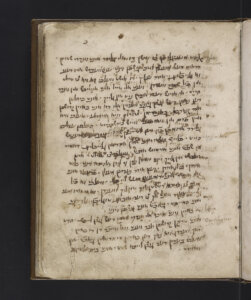The year 2022 marked the 800th anniversary of the founding of the University of Padua, one of the oldest universities in the world. The celebration included an exhibition done in conjunction with the Jewish Heritage Museum of Padua that offered a fascinating glimpse into the presence of Jewish medical students in Padua in the 16th century. The Jewish Heritage Museum is housed in the city’s Ashkenazi Synagogue, founded in 1522 and restored after a 1943 fascist ransacking. Let’s extend a mazel tov to the Ashkenazi Synagogue on its 500th birthday! There are much older synagogues still standing, but five centuries is an impressive run.
The exhibition closed on December 31, 2022, and I would never have known about it were it not for my cousin Alison. She sent along an article about it, knowing it would be of particular interest to me; the exhibition covered the time that my literary subject, the anatomy maven Andreas Vesalius, wrote his famous 1543 textbook, de humani corporis fabrica (The Structure of the Human Body) while he was on the medical school faculty at Padua.
What’s Yiddish for “Gall Bladder?”
The University of Padua should kvell over being the first medical school in Europe to admit Jews. Something to be proud of! But those guys still faced challenges, never mind that you couldn’t get a decent bagel in Padua. Many Jewish med students came to Padua from Yiddish-speaking towns in Europe where Italian was not spoken and Latin inconsistently taught. Until they got up to speed, the language deficits left many Jewish med students fartootst – they struggled to communicate with local citizens or follow lectures typically delivered in academic Latin.
Vesalius likely did not think of himself as a mensch. But he kindly, if not intentionally, threw Jewish students a small lifeline in the Fabrica. In it he catalogued anatomical terms in several classical languages, including Hebrew, the language of the Torah. In the text he thanks Lazarus de Freigas, “a distinguished Jewish physician and close friend” for his counsel.
The most amazing artifact in the exhibition was a Yiddish translation of the Epitome, a short version of the Fabrica that Vesalius created for students. It was done in Germany in the second half of the 16th century from a German translation of the Epitome. One could question the accuracy of this text, coming as it did through the original Latin to German to Yiddish. But the effort it took to create this document demonstrates true dedication to learning.
The woes of observant Jewish med students in Padua did not end with language troubles. For them, the study of anatomy was a source of real tsuris. While the medical school held formal human dissections once or twice a year, “private” dissections took place off-campus when cadavers could be procured. The remains of an executed criminal might come their way, but the usual mode of access was to rob graves. Jewish corpses were among the most prized because Jewish tradition called for burials to take place within a few days of death, so the corpse would be less decomposed. The conflict for Jewish students was that it was a shanda to desecrate a Jewish corpse. How did they reckon with this sinful activity? They raised their concerns, but I’m guessing that Jewish students walked on eggshells in dealing with any controversy.
Padua’s Fellowship and Cultural Sensitivity
Also exhibited were several impressively ornate diplomas of Jewish graduates. The diplomas were remarkable in that thoughtful concessions to the Jewish faith were made in the invocations. For example, “In the name of Christ” was replaced by “In the name of the Omnipotent God,” and “In the year of Our Lord” was changed to “the current year.” Now that’s real rachmones on the part of the University.
Thank you, Cousin Alison! I wish I could have seen this exhibition in person. But one day, I hope to visit Padua and walk the same streets as Vesalius and his students, some of whom could be my distant Ashkenazi relatives from Poland or Romania. I might not be the first doctor in the family!

